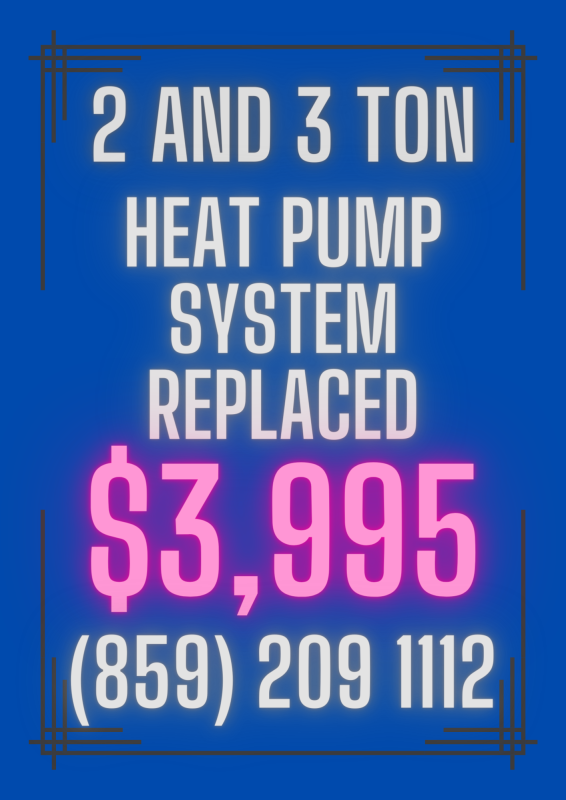Blog
Emergency Heat with Heat Pump
What is a Heat Pump?
A heat pump is a type of heating, ventilation, and air conditioning (HVAC) system that can provide both heating and cooling for indoor spaces. Unlike traditional heating systems that generate heat, a heat pump moves heat from one place to another. The primary components of a heat pump include an outdoor unit (condenser) and an indoor unit (evaporator).
Here’s how a heat pump works:
- Heat Transfer:
- In heating mode, the outdoor unit extracts heat from the outside air (even in cold temperatures) and transfers it to the indoor unit.
- In cooling mode, the process is reversed. The heat pump extracts heat from the indoor air and releases it outside.
- Refrigerant Cycle:
- The heat pump uses a refrigerant to facilitate the heat transfer process. The refrigerant circulates between the indoor and outdoor units, absorbing and releasing heat as it goes through the cycle.
- Compressor:
- The compressor, located in the outdoor unit, pressurizes the refrigerant, increasing its temperature and making it capable of absorbing heat from the outdoor air.
- Expansion Valve:
- The refrigerant then moves to the indoor unit, where it passes through an expansion valve. This causes the refrigerant to expand and cool down.
- Indoor Coil (Evaporator):
- The cooled refrigerant passes through the indoor coil, where it absorbs heat from the indoor air. This warms up the refrigerant.
- Air Distribution:
- The warmed air is then distributed throughout the indoor space using a fan system.
- Condenser:
- The refrigerant, now carrying the absorbed heat, returns to the outdoor unit. The condenser releases the heat into the outside air.
Heat pumps are energy-efficient because they move heat instead of generating it, making them particularly effective in moderate climates. They can provide both heating and cooling, making them versatile for year-round comfort. Some heat pumps also come with additional features such as variable-speed compressors and defrost cycles to enhance efficiency and performance in different weather conditions. Heat pumps are commonly used in residential and commercial buildings for their energy efficiency and dual-functionality.
Do I need Auxiliary Heat?
Whether your heat pump needs auxiliary heat strips depends on various factors, including the climate in your region, the size of your home, and the efficiency of your heat pump. Here are some considerations:
- Climate:
- Heat pumps are efficient for providing heating in moderate climates. In colder climates, especially during extremely low temperatures, the efficiency of the heat pump may decrease.
- In regions with mild winters, a heat pump alone may be sufficient to meet heating needs.
- Size of the Home:
- The size of your home influences the heating requirements. Larger homes may require additional heating sources to supplement the heat pump.
- Efficiency of the Heat Pump:
- Modern heat pumps are designed to operate efficiently in a range of temperatures. However, as the outdoor temperature drops, the heating capacity of a standard air-source heat pump may decrease.
- Some heat pumps are equipped with advanced features like variable-speed compressors and defrost cycles, which can enhance performance in colder conditions.
- Comfort Preferences:
- If you have specific comfort preferences and want to ensure consistent warmth, especially during very cold weather, auxiliary heat strips can provide additional heating when needed.
- Energy Costs:
- While auxiliary heat strips can provide supplemental heat, they can also consume more energy than the heat pump alone. This may lead to higher energy bills.
- Smart Thermostat Settings:
- Smart thermostats are designed to optimize the operation of heat pumps, using auxiliary heat only when necessary. These thermostats can help manage energy consumption more efficiently.
It’s recommended to consult with an HVAC professional to assess your specific heating needs and determine whether auxiliary heat strips are necessary for your heat pump. They can evaluate factors such as your local climate, home size, and existing HVAC system to provide tailored advice. The best news: The HVAC Outlet can take care of all of this for you!
Keep in mind that relying on auxiliary heat strips too frequently can impact energy efficiency and increase operating costs. Therefore, finding a balance based on your specific climate and comfort requirements is essential.


